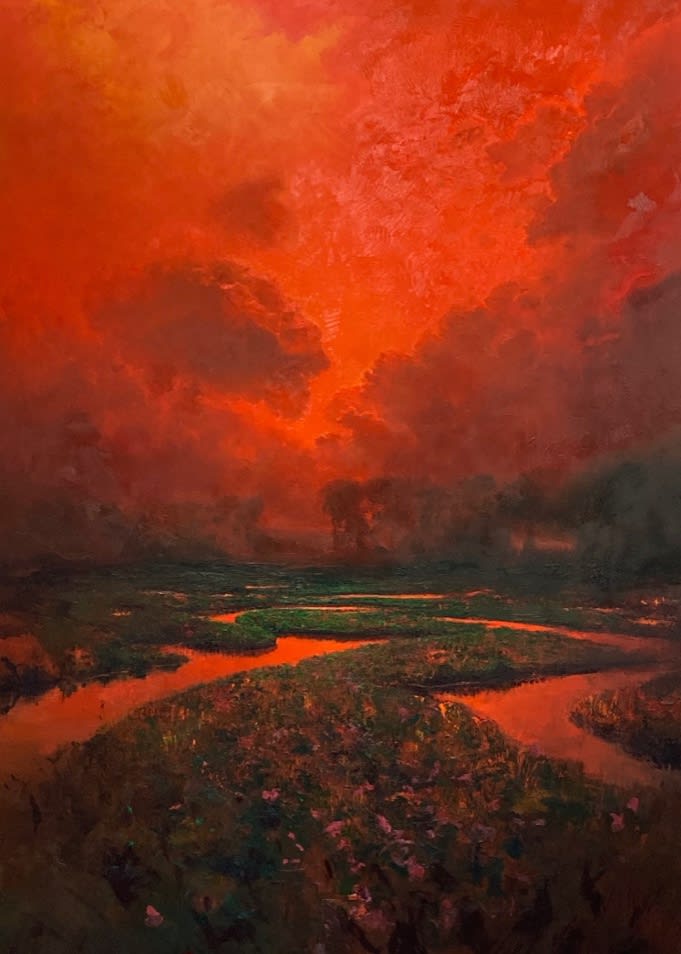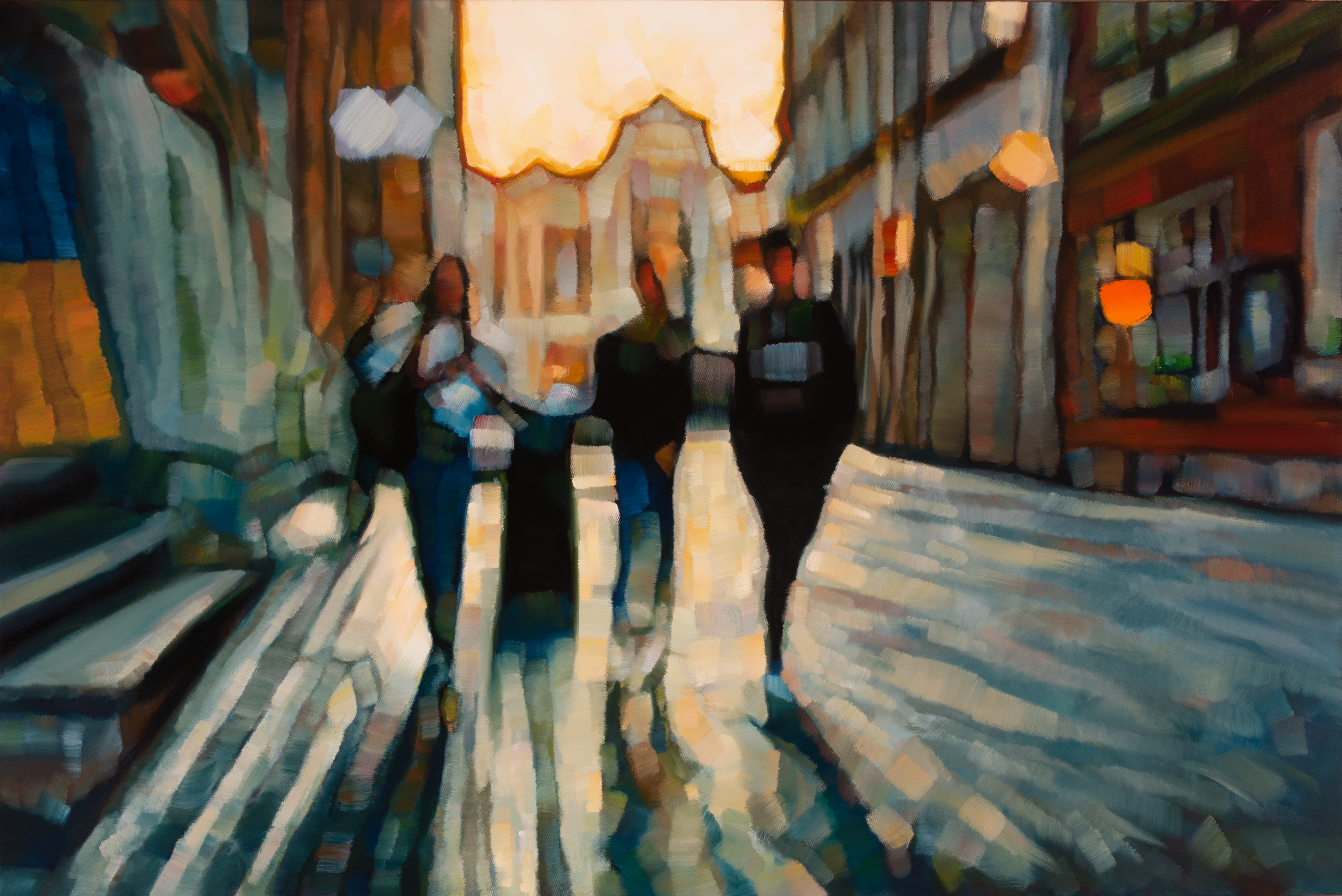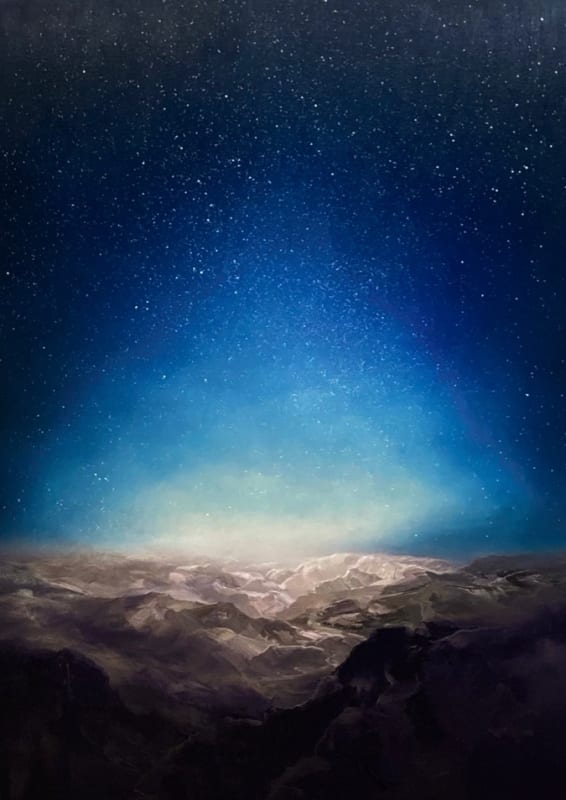Mishael Coggeshall-Burr and Wilhelm Neusser "Standing Still" at Abigail Ogilvy
Time and the world fly by in “Standing Still,” a two-person show at Abigail Ogilvy Gallery featuring paintings by Mishael Coggeshall-Burr and Wilhelm Neusser. Both artists focus on place – cityscapes for Coggeshall-Burr, mostly natural landscapes for Neusser. Both employ rapturous color.
But Coggeshall-Burr uses fat, yummy brushstrokes to blur his scenes; the colors almost pixilate, and the tactility of the paint tempts touch. He doesn’t depict places so much as memories, the kind that swirl at the edges of dreams infused with feeling. Neusser’s landscapes, meanwhile, are hyperrealist – pinhole stars scattered through chilly cobalt skies; mountain ridges etched from stone. (There will be an artists’ talk with Andrew Fish on Saturday, May 20).
Neusser’s paintings, despite their high-res quality, are fictions and Coggeshall-Burr’s are based on photographs. And Neusser’s paint application looks improvisational: all spatter and smear beside Coggeshall-Burr’s more orderly brushed panes of gesture.

Neusser’s skies are vast and ripe with spiritual and emotional undertones, like those of J.M.W. Turner and Hudson River School painters such as Thomas Cole and Fitz Henry Lane. The cloud-clotted, fiery-orange sky in “Red Marsh (2308)” (above) looks apocalyptic, but it was inspired by Massachusetts marshland, not wildfires. The still water snaking through reedy grass mirrors the penetratingly orange sky. Get close to look at Neusser’s fleet, unpredictable brushwork in those reeds: Specks and streaks in deep green, and over that, flecks of rose resembling petals or wings. It’s busy, painterly, full of gesture – and yet it results in hyperrealism.
An aurora of cool blue pulls us in like a light at the end of a tunnel in “Nightglow (2321)” (top). The undulant mountains below look alive and roiling, edged with light. The emptiness, aside from the scattered droplets of stars, is the kind that makes a human feel tiny.
While Neusser’s distance is spatial, Coggeshall-Burr’s is a felt expanse, the distance between now and then. He and his wife Nadya Tkachenko have traveled to Ukraine since the Russian invasion, and Tkachenko has started the nonprofit Project Nadiya to help Ukrainian refugees.

Paintings such as “Arriving” (above), which depicts displaced Ukrainians in Poland, strike notes of hope and loss. Four dark figures walk toward us, the golden sky behind them casting reflections on the street. Lights blur into glowing baubles. Everything and nothing is tangible: The narrow street, the buildings, the solid figures; they seem to be slipping by, but filled with the particular intensity of their moment.
Coggeshall-Burr’s impressionistic, fuzzing edges and brushy panes of light look like reflections cast by stained glass. In Uzhhorod, Ukraine, last year, he photographed the evening quietude after the daylight air-raid sirens left off and painted “Night River” (below). His brushstrokes block out gleams and glimmers of illuminated boats and reflections on the water. This painting, too, kindles like a memory – of lost serenity.
The two painters, with their different registers of reverie (Neusser’s epic, Coggeshall Burr’s intimate), remind us of all we can see if we just stand still. It’s a matter not just of looking, but of sensing a world beyond what we see – within and without.



